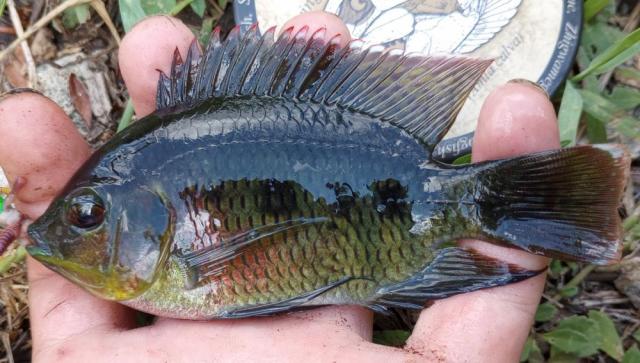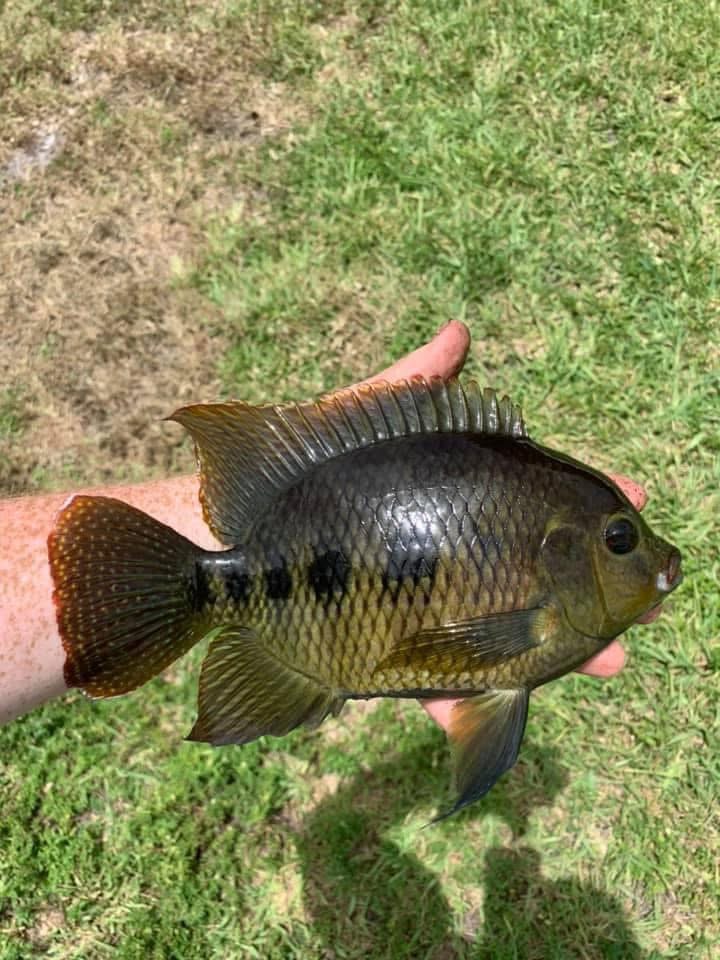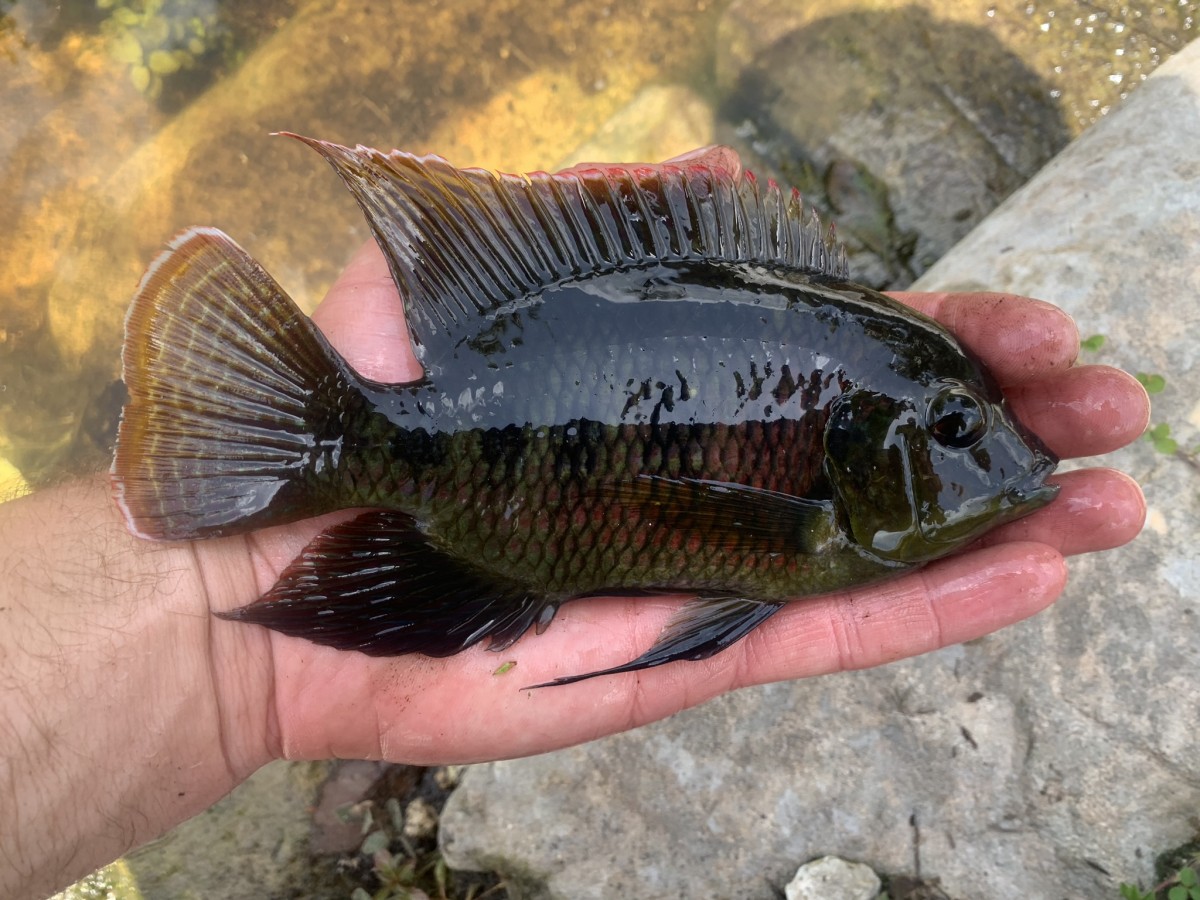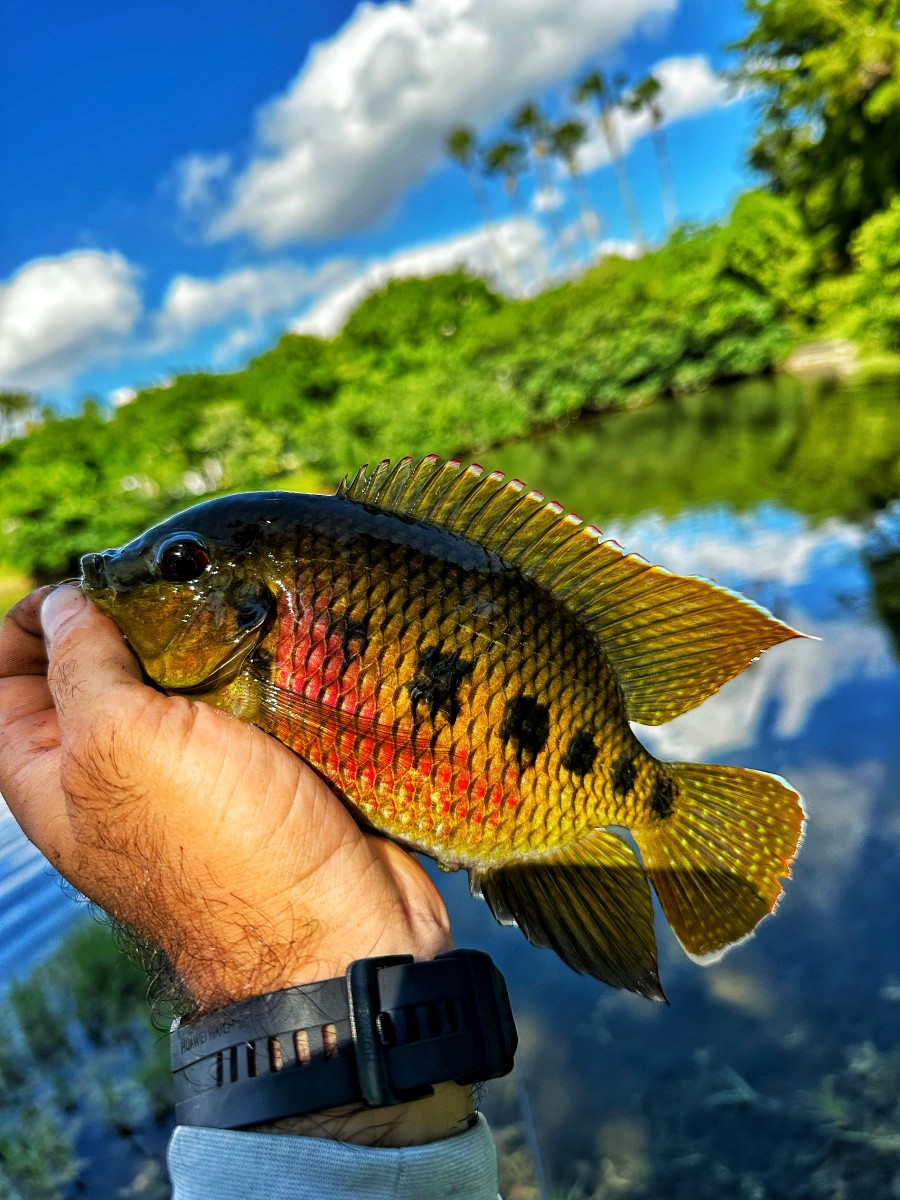Spotted tilapia
(Pelmatolapia mariae)
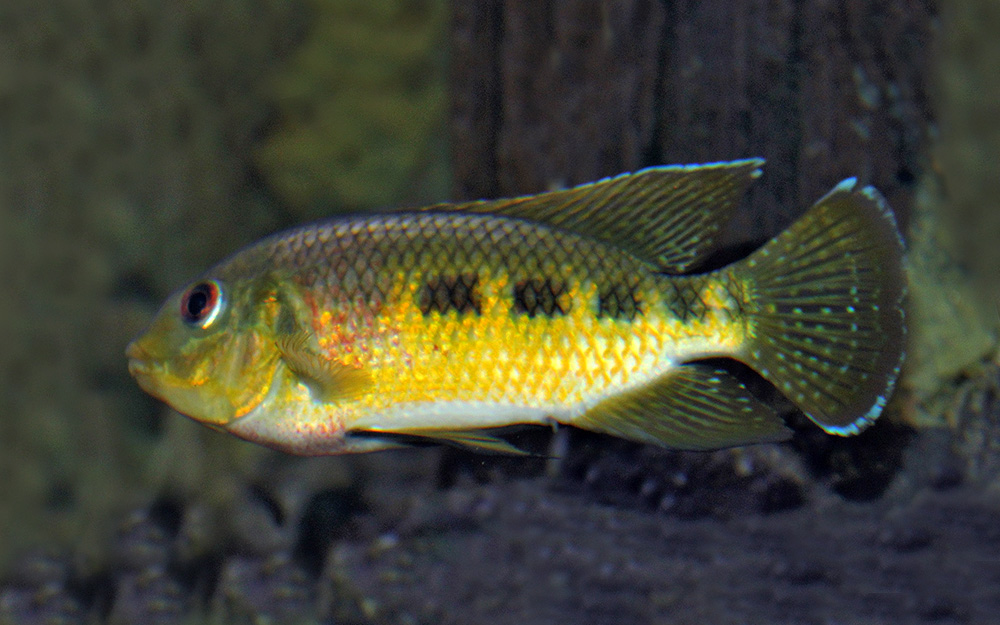
Classification
General data
The spotted tilapia (Pelmatolapia mariae), also known as the spotted mangrove cichlid or black mangrove cichlid, is a species of fish of the cichlid family. It is native to fresh and brackish water in West and Central Africa, but has been introduced to other regions where it is considered invasive.
Spotted tilapia have high fecundity, simple food requirements and extensive tolerance of environmental variables such as water temperature, salinity, and pollution. These characteristics allow spotted cichlids to rapidly populate many areas that have an appropriate habitat. Typically spotted tilapia tend to be an aggressive and territorial species, and research has found that internal reproductive androgenic factors can overrule the effect of size on dominance encounters in this species.
Spotted tilapia have a short rounded snout and three anal spines. They are dark olive green to light yellowish in colour and have eight or nine dark bars on their sides which are more evident in young spotted tilapia than adults. They also have two to six dark spots between the bars on the middle of their side and they reach a maximum standard length of 32.3 cm (1.1 ft) Spotted tilapia have a rapid growth rate and maturation time.
Spotted tilapia are native to Africa from the Côte dIvoire to Ghana, and Benin to Cameroon. They have also established large feral populations outside of their native ranges, such as in Florida and Australia.
Spotted tilapia live in a variety of habitats. They have been found in both still and flowing waters, in shallow and deep water, in places where there is both little or no coverage and in rocky and debris-strewn areas.
